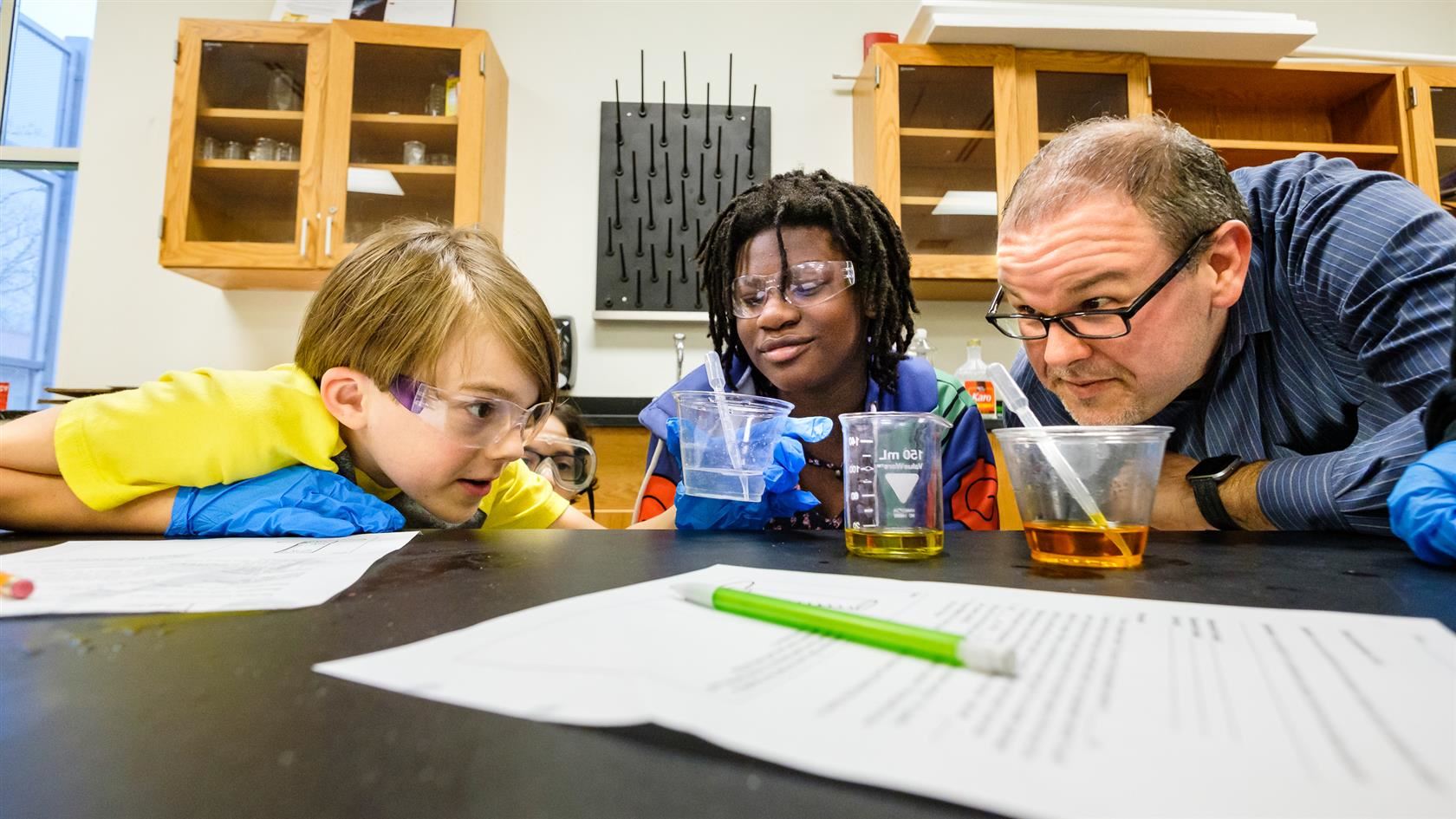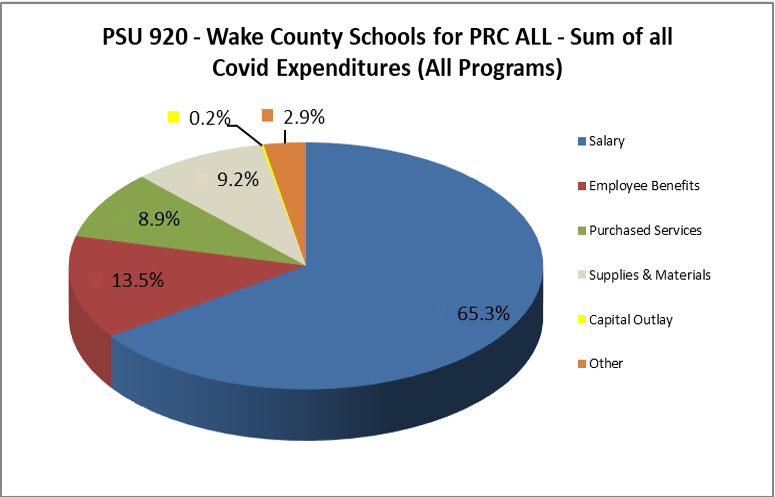- Wake County Public School System
- Pandemic Relief Funds
Pandemic Relief Funds
-

The Wake County Public School System (WCPSS) has received federal, state, and county resources to help us respond to the COVID pandemic. The district received one-time funding from the State COVID-19 Supplemental Funds, Wake County Government, Coronavirus Aid Relief, and Economic Security (CARES) Act, and the Elementary and Secondary School Emergency Relief Act (ESSER), and the American Recovery Plan (ARP).
In July 2021, a survey was shared with all WCPSS staff, families, and several community partners. The goal was to seek input on the use of ESSER III funds. About 7,900 responses with the largest group of respondents identifying as family members of WCPSS students (~ 5,800). Community Survey Responses
Initial Pandemic Relief funding (Governor and County)
Governor Cooper’s Emergency Fund - First emergency funds received: $3.8 m
-
$2.4 m for Child Nutrition salaries and benefits
-
$1.4 m for Custodial contract cleaning
Wake County Government Summary of Expenditures: $29.1 m
-
50,000 devices to facilitate remote learning - $14.1 m
-
Personal Protective Equipment (PPE), sanitation and cleaning supplies, barriers, signage, MERV 13 filters - $7.9 m
-
Child Nutrition Services feeding program - $5.5 m
-
Student connectivity - $1.6 m
Pandemic Relief funding (State and Federal Funds) allotted totals $437 million and span the 2021-2024 school years
- As of Feb. 29, 2024, $383.5 million has been spent and $3.55 million is encumbered.
- An additional $50.3 million is projected to be spent through June 30, 2024.
Below is a summary of the actual and projected pandemic relief spending through June 30, 2024.Actual Expenditures: March 2020 through Feb. 29, 2024
NCDPI - Wake County Public School System COVID Expenditures as of Feb. 29, 2024
PSU 920 Wake County Schools for PRC All Sum of all Covid Expenditures
- Salary 65.3%
- Employee Benefits 13.5%
- Purchased Services 8.2%
- Supplies and Materials 9.2%
- Capital Outlay 0.2%
- Other 2.9%.

-
-
Planned Expenditures: July 1, 2023 - June 30, 2024: $93.2 million
-
Intervention and Acceleration Teacher Additional Months of Employment
The additional months of employment are used to provide intervention instruction to students requiring supplemental and/or intensive support to accelerate learning for students who may have missed opportunities for learning due to the pandemic. The work is performed in conjunction with the Intervention Team Facilitator/Coordinator and the classroom teacher. This teacher may cross-collaborate with a variety of stakeholders such as ESL, AIG, and Counseling to ensure supported students receive opportunities to advance.
-
Summer Career Accelerator and Enrichment
In-person instruction in core and enrichment activities. Funding will be used to pay personnel, including teachers, bus drivers, and cafeteria workers.
-
Mental Health Services
Funding is used for nurses, social workers, counselors, and psychologists. As well as, community partnerships, mental health contract services, suicide prevention, social-emotional learning sessions offered to families, and supplies and software.
-
Addressing Needs of Special Populations
CARES, ESSER, and ARP state and federal funds were allocated to address the needs of special education students impacted by the COVID-19 pandemic, per the Individuals with Disabilities Education Act (IDEA).
-
Providing Principals with Resources
One Building Substitute position will be allotted to each school. Positions will be 12 months at year-round schools and 10 months at all other calendar schools. (197 schools received one full-time Permanent Building Substitute).
-
Facility repairs improvements to minimize virus transmission
Funding is used for the maintenance and upkeep of existing HVAC equipment. Supports the purchase of upgraded MERV-13 filters for HVAC equipment.
-
Other ESSER-Eligible Activities
-
Funds to maintain district operations to support building maintenance and utilities.
-
Positions to support the fiscal compliance and monitoring of ESSER/ARP funds.
-
Indirect costs
-
Feedback on ESSER funds spending
-
Pandemic Relief board presentations
- Aug. 15, 2023
- March 21, 2023
- Dec. 20, 2022
- March 15, 2022
- Nov. 16, 2021 (begin Page 14)
- Oct. 19, 2021
- March 16, 2021
- Nov. 10, 2020
- Sept. 15, 2020
- May 5, 2020 (begin Page 10)

